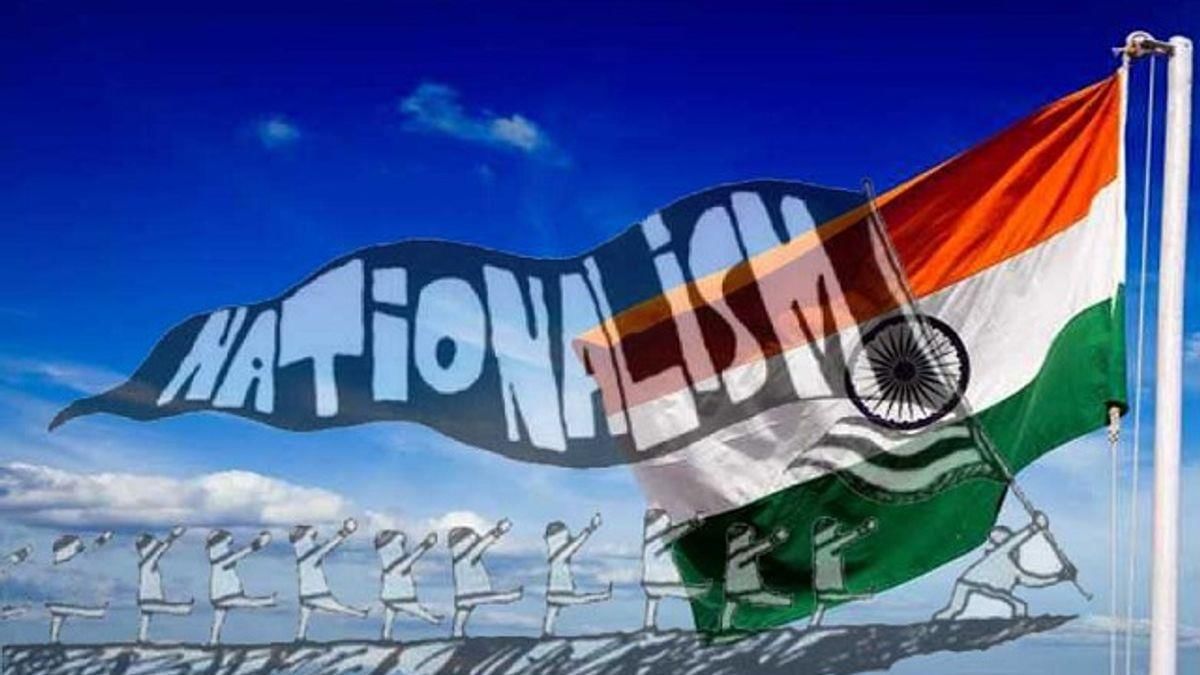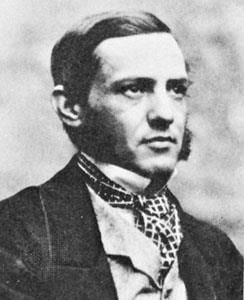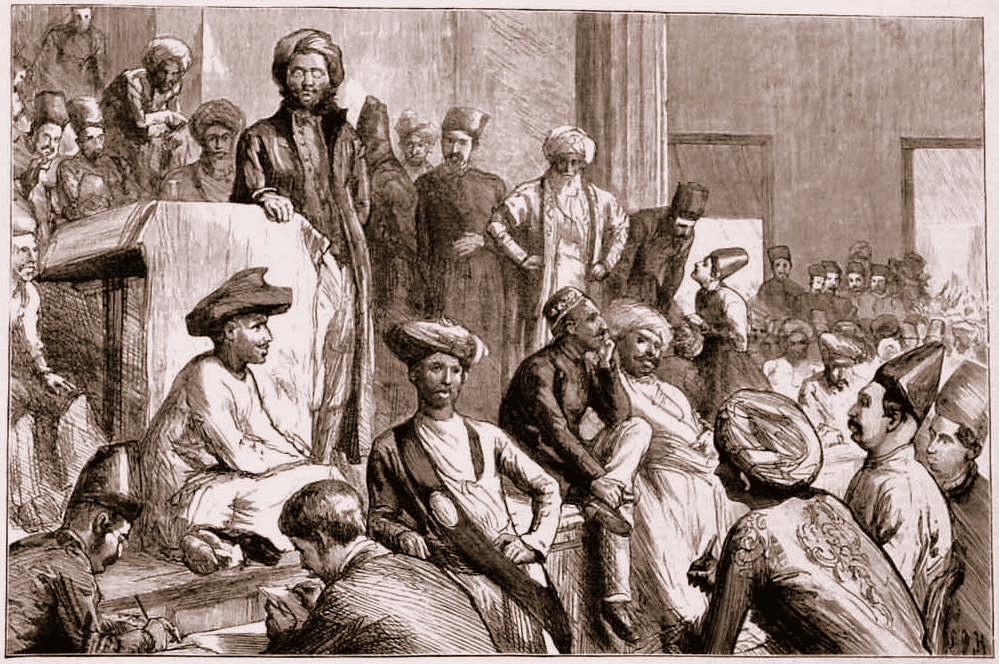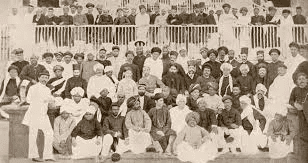Spectrum Summary: Beginning of Modern Nationalism in India | History for UPSC CSE PDF Download
The start of modern nationalism in India is usually explained as a reaction to what the British rulers were doing. They set up new things like institutions and opportunities, and Indians responded to that. So, Indian nationalism grew because of how the British were running things and how Indians reacted to it. But, to understand it better, we should see Indian nationalism as a mix of many things coming together. This article will talk about different factors and aspects linked to the beginning of modern nationalism in India, which can be useful for people preparing for the UPSC exam.
Factors in the Growth of Modern Nationalism
The traditional view attributes the rise and growth of Indian nationalism to the British Raj's creation of new institutions, opportunities, and resources. However, nationalism was also a response to colonial policies. 
Indian nationalism was a result of a mix of various factors:
- The worldwide surge in nationalism and self-determination rights, was inspired by the French Revolution.
- Indian Renaissance, a cultural and intellectual revival in India.
- Modernization was initiated by the British in India.
- Strong reaction to British imperialist policies in India.
Understanding of contradictions in Indian and colonial interests
- Over time, people started to see that India's economic problems were mainly due to colonial rule. This realization brought different groups together, highlighting that their interests were linked.
- The interests of Indians included everyone, from peasants and artisans to workers, intellectuals, the educated, and even capitalists.
- In response to the contradictions and challenges posed by colonial rule and its policies, the nationalist movement began to take shape. This movement aimed to address the issues faced by all these groups under colonial rule.
Political, Administrative and Economic Unification of the Country
- The British rule in the Indian subcontinent stretched from the Himalayas in the north to the Cape Comorin in the south, and from Assam in the east to the Khyber Pass in the west.
- While India had previously been unified under the Mauryas and the Mughals, the British created an even larger state.
- Indian provinces were under direct British rule, while princely states were under indirect British rule.
Political Unity
- The British imposed political unity in India through a professional civil service, a unified judiciary, and codified civil and criminal laws.
- This new political unity complemented the cultural unity that had existed in India for centuries.
Development of Infrastructure
- The British developed modern means of transport and communication, including railways, roads, electricity, and telegraphs, driven by administrative convenience, military defence, and economic exploitation.
Economic Linkage
- From the nationalists’ perspective, this unification linked the economic fates of different regions.
- For example, a crop failure in one region would impact prices and supply in another region.

Western Thought and Education
- The modern education system introduced by the British in India opened up avenues for the adoption of contemporary Western ideas.
- Despite being designed for efficient administration, this system of education significantly influenced Indian political thought.
Impact of Western Thinkers
- European writers such as Milton, Shelley, John Stuart Mill, Rousseau, Paine, Spencer, and Voltaire played a crucial role in shaping Indian perspectives.
- Their liberal and radical ideas promoted modern rationality, secularism, democracy, and nationalism among Indians.
Role of the English Language
- The English language served as a unifying medium for nationalist leaders from diverse linguistic backgrounds, facilitating communication and collaboration.
Influence of Higher Education in England
- Educated Indians in liberal professions, such as lawyers and doctors, often pursued higher education in England.
- There, they observed the functioning of modern political institutions in a free society and contrasted it with the Indian scenario, where basic rights were denied to citizens.
Emergence of the Middle-Class Intelligentsia
- This growing class of English-educated individuals formed the middle-class intelligentsia, becoming the core of emerging political dissent in India.
- They provided leadership to Indian political associations and were instrumental in driving the political movement.
Role of Press and Literature
- In the second half of the 19th century, there was a remarkable increase in Indian-owned English and vernacular newspapers, despite various restrictions imposed by colonial rulers.
- By 1877, there were approximately 169 newspapers published in vernacular languages, with a combined circulation nearing 1,00,000.
- The press played a crucial role in criticizing official policies and urging people to unite.
- It also contributed to the spread of modern concepts such as self-government, democracy, civil rights, and industrialization.
- Newspapers, journals, pamphlets, and nationalist literature facilitated the exchange of political ideas among nationalist leaders from different regions.
Rediscovery of India's Past
- Historical research by European scholars like Max Mueller, Monier Williams, Roth, and Sassoon, and Indian scholars like R.G. Bhandarkar, R.L. Mitra, and Swami Vivekananda, painted a new picture of India's past.
- This new picture showed India as having strong political, economic, and social institutions, thriving trade, rich arts and culture, and many cities.

Progressive Character of Socio-Religious Reform Movements
- These reform movements aimed to eliminate the social issues that divided Indian society.
- By addressing these problems, the movements helped to unite different groups of people.
- This unity among various sections of society played a significant role in the rise of Indian nationalism.
Rise of Middle-Class Intelligentsia
- British innovations in administration and the economy led to the emergence of a new urban middle class in towns.
- According to Percival Spear, this new middle class was a "well-integrated all-India class" that had a diverse background but shared common knowledge, ideas, and values.
- Although it represented a minority within Indian society, it was a dynamic and influential group.
- This class possessed a strong sense of unity, purpose, and hope for the future.
- Due to their education, new social status, and close relationships with the ruling class, they became very prominent.
- This middle class played a key role in leading the Indian National Congress throughout its development.
Impact of Contemporary Movements in the World
- The rise of several countries occurred after the fall of the Spanish and Portuguese empires in South America.
- National liberation movements in Greece and Italy played a significant role.
- Ireland had its own specific movements that were part of this larger trend.
- These events greatly impacted the nationalist movements of the time.
Reactionary Policies and Racial Arrogance of Rulers
- The British aimed to promote the myth of white superiority through intentional policies of discrimination and segregation.
- This approach caused deep hurt among the Indian people.
- Lytton's harsh included controversial actions:
- Lowering the maximum age limit for the I.C.S. examination from 21 to 19 years in 1876.
- Organizing the grand Delhi Durbar in1877 during a serious famine in the country.
- Introducing the Vernacular Press Act in 1878.
- Enforcing the Arms Act in1878.
- These actions sparked a strong backlash across the nation.
- The Ilbert Bill controversy arose when Ripon’s Government aimed to eliminate racial distinctions in the judiciary.

- The goal was to grant Indian members of the covenanted civil service the same powers and rights as their European counterparts.
- Due to strong opposition from the European community, Ripon had to change the bill, which weakened its original purpose.
- This situation revealed to the nationalists that they could not expect justice and fairness when it involved the interests of Europeans.
- The organized protests by Europeans against the Ilbert Bill also taught the nationalists how to effectively advocate for their rights and demands.
Political Associations Before the Indian National Congress
- The Indian National Congress was not the first political group in India.
- In the early 19th century, most political organizations were mostly made up of wealthy and noble people.
- These groups were typically local or regional.

- They often sent long requests to the British Parliament that included demands for:
- administrative reforms
- involving Indians in the administration
- improving education
- In the second half of the 19th century, political groups began to be led by the educated middle class.
- This middle class included:
- lawyers
- journalists
- doctors
- teachers
- These new leaders had a broader view and a larger set of goals.
Political Associations in Bengal

- The Bangabhasha Prakasika Sabha was established in 1836 by followers of Raja Rammohan Roy.
- The Zamindari Association, often called the ‘Landholders’ Society’, was created to protect the interests of landlords.
- Despite its narrow goals, the Landholders’ Society initiated organized political activities and used constitutional methods to address grievances.
- The Bengal British India Society was formed in 1843 with the aim of collecting and sharing information about the living conditions of people in British India.
- The society aimed to use peaceful and lawful means to improve the welfare and rights of all classes of people.
- In 1851, both the Landholders’ Society and the Bengal British India Society combined to create the British Indian Association.
- This association sent a petition to the British Parliament, asking for the following changes to be included in the renewed Charter of the Company:
- Establishment of a separate legislature that represents the people.
- Separation of executive and judicial powers.
- Reduction in salaries of high-ranking officials.
- Abolition of salt duty, abkari, and stamp duties.
- Some of these requests were partially accepted when the Charter Act of 1853 added six members to the governor general’s council for legislative work.
- The East India Association was formed by Dadabhai Naoroji in 1866 in London to discuss Indian issues and influence English public figures to support Indian welfare.
- Later, branches of this association were created in major Indian cities.
- The Indian League was founded in 1875 by Sisir Kumar Ghosh to promote nationalism and political education among the people.
- The Indian Association of Calcutta, also known as the Indian National Association, replaced the Indian League in 1876.
- It was formed by younger nationalists from Bengal, led by Surendranath Banerjea and Ananda Mohan Bose, who were unhappy with the pro-landlord stance of the British Indian Association.
- The Indian Association was the most significant organization before the Indian National Congress, aiming to:
- Encourage public awareness about political issues.
- Unite Indians under a common political agenda.
- It protested against the lowered age limit in 1877 for candidates taking the Indian Civil Service exam.
- The association demanded that civil service exams be held simultaneously in England and India and called for the Indianization of high-level government jobs.
- It campaigned against oppressive laws such as the Arms Act and the Vernacular Press Act.
- Branches of the association were established in various towns and cities across Bengal and beyond.
- To attract poorer members, the association kept its membership fees low.
- The association organized an all-India conference in Calcutta from December 28 to 30, 1883, which saw participation from over a hundred delegates from different regions of the country.
- In this way, the association was a precursor to the Indian National Congress as a national organization.
- It later merged with the Indian National Congress in 1886.
Political Associations in Bombay

- The Poona Sarvajanik Sabha was founded in 1870 by Mahadeo Govind Ranade.
- The Bombay Presidency Association was started by Badruddin Tyabji, Pherozshah Mehta, and K.T. Telang in 1885.
Political Associations in Madras

- The Madras Mahajan Sabha was founded in 1884 by M. Viraraghavachari, B. Subramaniya Aiyer, and P. Anandacharlu.
Pre-Congress Campaigns
- The associations organized various campaigns before the Indian National Congress appeared on the scene.
- For the imposition of import duty on cotton (1875).
- For Indianization of government service (1878-79).
- Against Lytton’s Afghan adventure.
- Against Arms Act (1878).
- Against Vernacular Press Act (1878).
- For the right to join volunteer corps.
- Against plantation labour and the Inland Emigration Act.
- In support of Ilbert Bill.
- For an All-India Fund for Political Agitation.
|
216 videos|855 docs|219 tests
|
FAQs on Spectrum Summary: Beginning of Modern Nationalism in India - History for UPSC CSE
| 1. What were some factors contributing to the growth of modern nationalism in India? |  |
| 2. What were the political associations that existed before the Indian National Congress? |  |
| 3. What were some pre-Congress campaigns that helped pave the way for modern nationalism in India? |  |
| 4. How did the spectrum of modern nationalism in India evolve over time? |  |
| 5. What were some key events that marked the beginning of modern nationalism in India? |  |

















